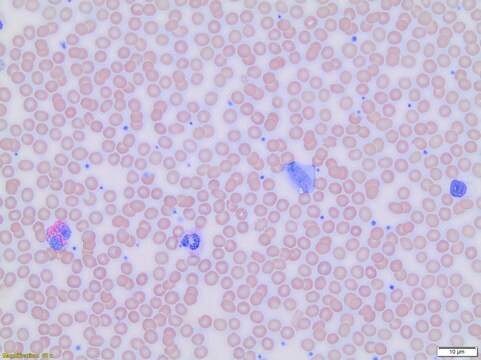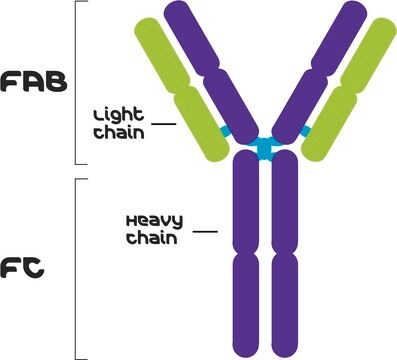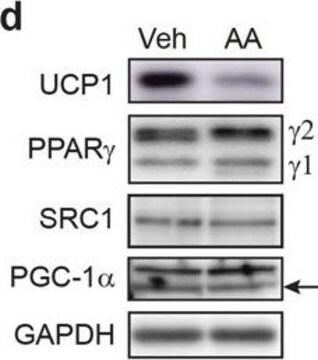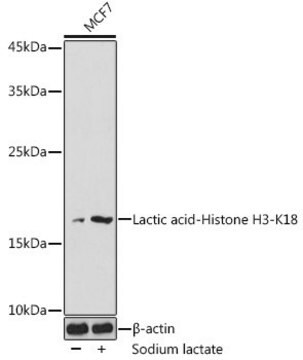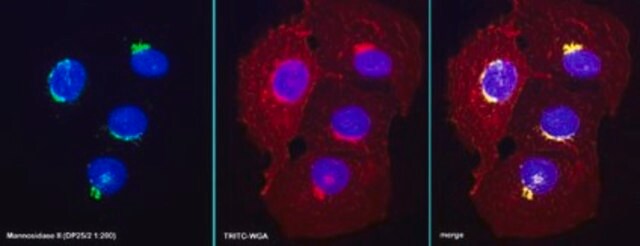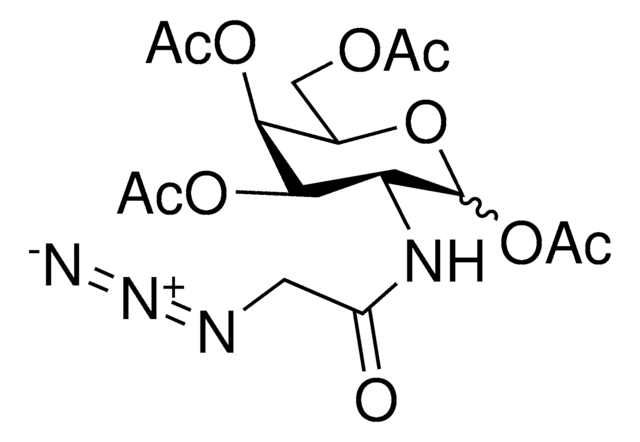Wichtige Dokumente
G2404
Anti-Golgi FTCD antibody, clone 58k-9, Mouse monoclonal
ascites fluid
Synonym(e):
Anti-LCHC1
About This Item
Empfohlene Produkte
Biologische Quelle
mouse
Qualitätsniveau
Konjugat
unconjugated
Antikörperform
ascites fluid
Antikörper-Produkttyp
primary antibodies
Mol-Gew.
antigen 58 kDa
Enthält
15 mM sodium azide
Speziesreaktivität
human, bovine, mouse, pig, canine, kangaroo rat, hamster, monkey, rat
Methode(n)
electron microscopy: suitable
indirect immunofluorescence: 1:50 using cultured CHO cells
western blot: 1:5,000 using whole rat liver extract
Isotyp
IgG1
UniProt-Hinterlegungsnummer
Versandbedingung
dry ice
Lagertemp.
−20°C
Posttranslationale Modifikation Target
unmodified
Angaben zum Gen
human ... FTCD(10841)
mouse ... Ftcd(14317)
rat ... Ftcd(89833)
Verwandte Kategorien
Allgemeine Beschreibung
Spezifität
Immunogen
Anwendung
The antibody was used:
- for the analysis of distribution of the 58K9 protein exclusively localized in the Golgi
- as a primary antibody in the immunofluorescence analysis in studies related to functioning of nuclear envelope protein TMEM209 in lung carcinoma cells, tracking TG2 (Transglutaminase Type 2) transport in renal tubular epithelial cells, binding of TRADD (TNFR-associated death domain protein) to TNF-R1 at the plasma membrane and localization of Wilson disease protein in the Golgi apparatus
- in immunoprecipitation studies
Immunofluorescence (1 paper)
Western Blotting (1 paper)
Biochem./physiol. Wirkung
Haftungsausschluss
Sie haben nicht das passende Produkt gefunden?
Probieren Sie unser Produkt-Auswahlhilfe. aus.
Lagerklassenschlüssel
12 - Non Combustible Liquids
WGK
nwg
Flammpunkt (°F)
Not applicable
Flammpunkt (°C)
Not applicable
Hier finden Sie alle aktuellen Versionen:
Besitzen Sie dieses Produkt bereits?
In der Dokumentenbibliothek finden Sie die Dokumentation zu den Produkten, die Sie kürzlich erworben haben.
Unser Team von Wissenschaftlern verfügt über Erfahrung in allen Forschungsbereichen einschließlich Life Science, Materialwissenschaften, chemischer Synthese, Chromatographie, Analytik und vielen mehr..
Setzen Sie sich mit dem technischen Dienst in Verbindung.